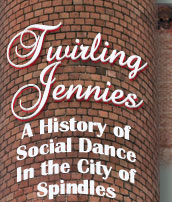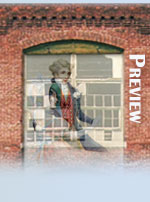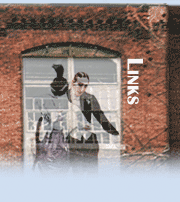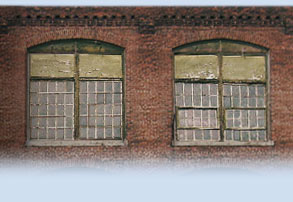The New England shoe industry evolved significantly over the first half of the nineteenth century. Individual shoemakers and their apprentices were replaced by central manufacturing shops that handed out piece work to "gangs"—groups of men, often neighbors—who would gather to stitch, bind, and assemble the shoes. Many gangs worked in small outbuildings called ten-footers, structures built specifically for that purpose. Eventually the gangs and their ten-footers would be replaced by full-fledged factories, but only after decades of machinery innovations eliminated the need for the extensive hand work that still defined the industry in 1850.
Nineteen-year-old Levi Nichols of Wilmington was working as a shoe-chalker that year. His dad was a joiner, a carpenter particularly skilled in finer work, but everywhere Levi looked men were turning to the shoe industry for income. It was the need for consistent quality that had doomed individual cobblers and prompted the rise of shoe gangs and specialized roles; young Levi's task was to coat shoe leather with chalk to prevent the shoes from sticking to the last, a foot-shaped wooden form used when attaching the sole.
By 1855 one in eight men in Massachusetts was listed as being a shoemaker—but Levi Nichols was no longer one of them. He had made his way to the booming city of Lowell where he moved into the rooms over Amos French's establishment and took a job downstairs as a server and baker. French's Confectionery had recently expanded and several other men worked there as bakers, three of them also boarding on the premises.
Those were eventful years for Nichols. His father passed away in '56. Around that same time his future partner, Melbourne Hutchins, took work as a driver in Lowell and moved into the rooms over the confectionery. If the men hadn't known each other before then, they certainly got to know each other as co-tenants. Meanwhile, both Lowell and the confectionery business continued to flourish.
The upstairs ballroom was busy as well. The polka craze of the 1840s—during which a Lowell Courier article compared the hoppy dance to a man trying to shake a loose shilling out of his pant leg—had lost steam by the '50s but traditional New England contra dances and a variety of quadrilles continued to fill the dance floors of Lowell. Did Nichols and Hutchins dance? Did they circulate through the guests while dressed in the evening fashion of the day, a far cry from the farm wear of their youth? Or were they too busy running the kitchen and preparing the food?
In July of 1858, Hutchins married and moved away. In October, Levi Nichols wed a fellow Wilmington native, Louisa Ann Wood, and also moved—but not very far. The couple took lodgings in the recently-completed Tyler Block next door. The new address was short lived, however; they were soon back boarding upstairs from the confectionery, and on October 6th, 1861 Louisa gave birth to a son, Frank Nichols.
By 1864, Levi Nichols was the proprietor of French's Confectionery. Amos French's lease had another eight years to run so one assumes Nichols sublet the building as part of taking over the business. Just what role Melbourne Hutchins played in the restaurant that year is unclear—he was living in Tewksbury and tackling various family and legal issues—but he soon returned to Lowell and the confectionery full time. Despite the Civil War's impact on the city, the restaurant and function hall on Central Street continued to do well. The Nichols & Hutchins name replaced French's when speaking of the eatery but the ballroom remained "French's Hall" for another decade.
In 1868, Levi and Louisa had a second son, Arthur Bertrand Nichols.
Many years later, a writer would refer to Nichols and Hutchins as "two of the most popular business men that ever had a sign over their door." Their firm, this 1897 article stated, "for a number of years carried on a catering and confectionery business at 37 Central Street…and in connection with their business was a dance hall, the most popular the city has ever had even to the present day… Nichols & Hutchins, the proprietors of this popular establishment, were very successful in business, and during the war and for a number of years after controlled that line of business." |



















